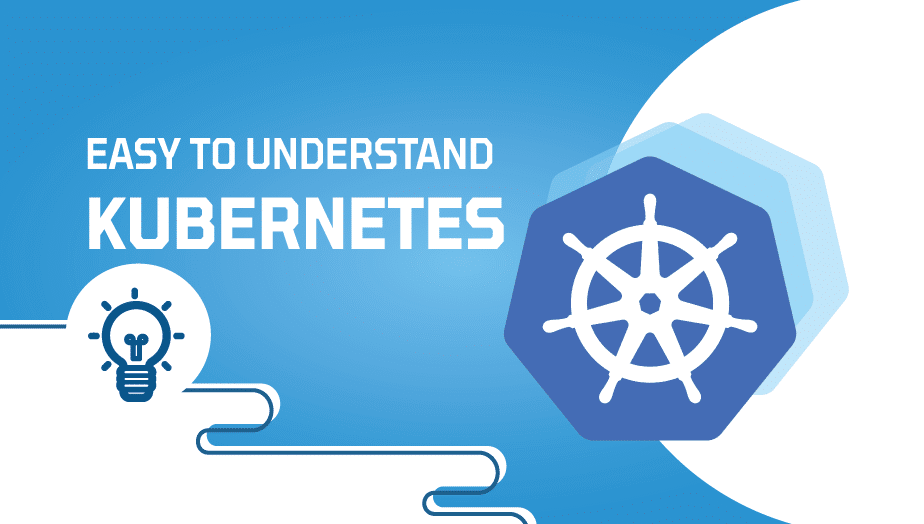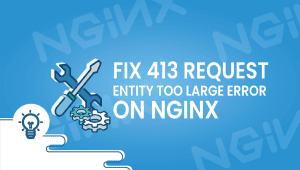What is Kubernetes?
The open-source platform Kubernetes allows declarative configuration and automation of containerized workloads and services. An ecosystem of great size and rapid growth resides there. Several Kubernetes tools, services, and support options are available. Kubernetes derives its name from Greek, meaning pilot or helmsman.
As an abbreviation, K8S is derived from the eight letters between the “K” and the “s.” Google’s Kubernetes project was open-sourced in 2014. Kubernetes combines over 15 years of Google’s production workload management experience with community-derived best-of-breed best practices.
What is Kubernetes used for?
I think it’s more important that we understand what containers are and why people use them,
A container is a mini-virtual machine; it is small because it does not require device drivers and other components like a traditional virtual machine. A container written in Linux, Docker is the most popular. Windows also includes containers that Microsoft added due to the popularity of containers.
An example will best illustrate why this is useful and important; Container creators realized that nginx and any other application that runs from a container only needs some bare minimum operating system to function.
Therefore, they decided to create a stripped-down version of an OS for nginx to run within. Consequently, you can install a self-contained system anywhere that is machine-independent. Presently containers are so well known that they undermine to form VMs out of date.
Kubernetes Provides you with the following:
- Service discovery and load balancing: Kubernetes can expose using the DNS name or using their IP address. If there is a high volume of traffic to a container, Kubernetes can load, balance and distribute the traffic so that the deployment remains stable.
- Storage orchestration: The Kubernetes scheduler auto-mounts a storage system of your choice, such as local storage, public cloud providers, etc.
- Automated rollouts and rollbacks: Kubernetes allows you to describe what state your deployed containers should be in, and it can change its actual state to the desired shape over time. By automating Kubernetes, you can create new containers for your deployment, remove existing containers and adapt their resources to the new containers.
- Automatic bin packing: Containerized tasks can be run on Kubernetes by giving it a cluster of nodes. Using Kubernetes, you can tell Kubernetes how much memory (RAM) each container needs. Containers can be attached to nodes in Kubernetes to maximize resource utilization.
- Self-healing: A user-defined health check triggers Kubernetes to restart failed containers, replace containers, and kill containers that do not respond. Kubernetes advertises containers only when they are ready to serve their users.
- Secret and configuration management: Kubernetes lets you store and manage sensitive information, such as passwords, OAuth tokens, and SSH keys. You can deploy and update secrets and application configuration without rebuilding your container images or exposing secrets in your stack configuration.
Kubernetes Cluster
Kubernetes provides you with a cluster.
A Kubernetes cluster is a set of nodes that run containerized applications. A containerized application packages the app with its dependencies and some necessary services. They are lighter and more flexible than virtual machines. As a result, Kubernetes clusters make it easier to develop, move, and manage applications.
Kubernetes clusters enable containers to run on multiple machines and environments, including virtual, physical, cloud-based, and on-premises. Here’s the diagram of a Kubernetes cluster,
Kubernetes terms explained
1. Kubernetes Master :
As in Kubernetes, the controller node manages and controls a set of workers (workloads runtime).
A controller node has the following components to help manage worker nodes:
- Kube-APIServer: which acts as the front end of the cluster. All external communication to the group is via the API-Server.
- Kube-Controller-Manager: which runs a set of controllers for the running cluster. The controller-manager implements governance across the group.
- Etcd: the cluster state database.
- Kube Scheduler schedules activities to the worker nodes based on events occurring on the etc. It also holds the node’s resources plan to determine the proper action for the triggered event. For example, the scheduler would determine which worker node will host a newly scheduled POD.
A highly available cluster comprises at least three controller nodes, each running a member of the etcd distributed database and all the Kubernetes master components (API, controller manager, and scheduler).
2. Kubernetes Node :
Kubernetes Nodes are logical collections of IT resources that support a container or several containers. The nodes are responsible for running Pods (Kubernetes’ units of containers), communicating with master components, configuring networking, and running assigned workloads. A Node can host multiple Pods.
Node components are worker machines in Kubernetes and are managed by the Master. A node may be a virtual machine (VM) or a physical machine, and Kubernetes runs equally well on both systems. kubelet – watches the API server for pods on that node and ensures they are running.
Kubernetes claims to support clusters with up to 5000 nodes. However, in practice, 500 nodes may already pose non-trivial challenges. The effects of large worker nodes can be alleviated using more performant controller nodes. A pod is the smallest execution unit in Kubernetes.
3. Kubernetes Pod :
The smallest Kubernetes execution unit is called a pod. A pod encapsulates one or more applications. Kubernetes automatically creates a new replica of a pod if it fails (or if the server it runs on falls). By nature, pods are ephemeral. Each pod consists of multiple cooperating processes (as containers) that comprise a cohesive service unit. Each container in a Pod is automatically co-located and co-scheduled on a physical or virtual machine in the cluster.
4. Kubernetes Kubectl :
Kubernetes command line interface (CLI), kubectl, Runs commands against any Kubernetes cluster. Because OpenShift Container Platform runs on top of a Kubernetes cluster, a copy of kubectl is also included with oc, OpenShift Container Platform’s command line interface (CLI).
5. Kubernetes Minikube :
Minikube is a lightweight Kubernetes implementation that creates a VM on your local machine and deploys a simple cluster containing only one node. Minikube is available for Linux, macOS, and Windows systems.
6. Kubernetes Service :
A Kubernetes service is a logical abstraction for a deployed group of pods in a cluster (which all perform the same function). Since pods are temporary, a service enables a group of pods that provide specific functions (web services, image processing, etc.) to be assigned a name and unique IP address (cluster).
7. Kubernetes Secrets :
Secrets are Kubernetes objects intended for storing a small amount of sensitive data. It is worth noting that Secrets are kept base64-encoded within Kubernetes, so they are not wildly secure. Ensure that you have role-based access controls (RBAC) to protect Secrets.
Like ConfigMaps, Secrets are used for storing confidential or proprietary information.
There is a caveat: Kubernetes Secrets are stored unencrypted in the API servers’ underlying data store (etc.).
Kubernetes vs. Other Systems:
Kubernetes has several advantages over container orchestration platforms, such as Docker Swarm, Apache Mesos, and Nomad. Kubernetes provides a comprehensive set of features for container orchestration, including automatic scaling, self-healing, service discovery, and load balancing. Kubernetes also has a vast ecosystem of tools and services built around it, making integrating with other systems and services more accessible.
Docker Swarm is a simpler alternative to Kubernetes that is easier to set up and manage. While Docker Swarm has some container orchestration capabilities, it does not match the advanced features provided by Kubernetes. On the other hand, Apache Mesos and Nomad offer greater customization and flexibility but require a higher level of expertise to configure and maintain.
Use Cases of Kubernetes:
Kubernetes is suitable for many use cases, including web applications, microservices, and big data analytics. Below are some of the most typical situations where Kubernetes is used:
- Web Applications: Kubernetes is an excellent platform for deploying and managing web applications. It can quickly scale web applications based on the number of incoming requests, ensuring the application is always available to users.
- Microservices: Kubernetes is ideal for deploying microservices-based applications. It can manage the lifecycle of individual services, ensuring that each service is running in a healthy state.
- Big Data Analytics: Kubernetes can be used to deploy and manage big data analytics platforms such as Apache Spark, Hadoop, and Kafka. It can scale these platforms based on the amount of data being processed, ensuring that the analytics platform is always running smoothly.
Kubernetes Features:
Kubernetes has several features that make it a powerful platform for container orchestration. Here are some of its key features:
- Automatic Scaling: Kubernetes can automatically scale containerized applications based on demand. It can also perform horizontal scaling by adding or removing nodes to meet the application’s needs.
- Self-Healing: Kubernetes can detect when a container or node fails and automatically restarts it. By following this approach, we can guarantee that the application is consistently functioning at an optimal level.
- Service Discovery and Load Balancing: Kubernetes includes service discovery and load balancing functions within its framework. It can automatically route traffic to the appropriate container, ensuring the application is always accessible to users.
- Configuration Management: Kubernetes allows for the easy management of configuration files, making it easy to configure and update containerized applications.
- Rolling Updates: Kubernetes can perform rolling updates of containerized applications, allowing seamless updates without downtime.
- Resource Management: Kubernetes can manage the allocation and distribution of resources, including CPU, memory, and storage, among multiple containers.
- High Availability: Kubernetes can ensure high availability by replicating containers across multiple nodes and providing they are always running in a healthy state.
Advantages of Kubernetes:
Kubernetes has several advantages that make it a popular choice for container orchestration. Here are some of its key benefits:
- Scalability: Kubernetes can scale containerized applications to meet the application’s demands. The platform is ideal for container deployments on a large scale.
- Portability: Kubernetes allows for the easy deployment of containerized applications across multiple environments, including on-premises data centers, public clouds, and hybrid cloud environments.
- Flexibility: Kubernetes is a flexible platform that can be customized to meet the application’s needs. It also has a vast ecosystem of tools and services built around it, making integrating with other systems and services more accessible.
- High Availability: Kubernetes can ensure high availability by replicating containers across multiple nodes and providing they are always running in a healthy state.
- Security: Kubernetes offers several security features, including role-based access control (RBAC), network policies, and secrets management.
Disadvantages of Kubernetes:
Kubernetes also has some disadvantages that organizations should consider before adopting it as their container orchestration platform. Here are some of its key disadvantages:
- Complexity: Learning Kubernetes can be challenging; the platform can be difficult to learn and set up and may require specialized knowledge to operate and maintain effectively.
- Resource Intensive: Kubernetes can be resource-intensive, requiring significant CPU, memory, and storage resources. Operating and maintaining this can be expensive, especially when using public cloud platforms.
Potential Cost: Kubernetes can be costly to operate and maintain, particularly on public cloud platforms. Organizations may need additional resources or services to manage the platform effectively.
Alternative Options to Kubernetes:
While Kubernetes is the most popular container orchestration platform, several alternative options are available. Here are some of the most notable alternatives:
- Docker Swarm: Docker Swarm is a container orchestration platform developed by Docker. For smaller container deployments, it’s easier to set up and manage than Kubernetes, making it a more favorable option.
- Apache Mesos: Apache Mesos is a distributed systems kernel that can manage containerized workloads. Compared to Kubernetes, it provides a container orchestration solution that is more adaptable and can be tailored to specific needs.
- Nomad: Nomad is a container orchestration platform developed by HashiCorp. This option is excellent for smaller container deployments because it is lightweight and straightforward to set up.
Conclusion:
Kubernetes is a powerful platform for container orchestration, offering automatic scaling, self-healing, service discovery, and load balancing. While it has several advantages, including scalability, portability, and flexibility, it also has disadvantages, including complexity, a steep learning curve, and resource-intensive requirements. Alternative options to Kubernetes, including Docker Swarm, Apache Mesos, and Nomad, may be better suited for smaller container deployments or organizations with limited resources and expertise. However, Kubernetes remains the most popular and widely used container orchestration platform, and it will likely remain so for the foreseeable future. Organizations considering adopting Kubernetes should carefully consider its advantages and disadvantages before deciding.
That’s it!
Kubernetes is a free and open-source container orchestration platform that automates containerized applications’ deployment, scaling, and management. It provides a framework for deploying and managing containerized applications across a cluster of machines.
Depending on your platform and requirements, there are various ways to install Kubernetes,. One popular method is to use a tool like kubeadm to bootstrap a cluster. You can follow the official Kubernetes documentation for detailed installation instructions.
A Kubernetes cluster is a set of machines (or nodes) that run containerized applications managed by Kubernetes. A Kubernetes cluster consists of a control plane and worker nodes. The control plane is accountable responsible for managing the overall state of the cluster, while worker nodes are responsible for running the applications.
To deploy an application on Kubernetes, you need to create a deployment object that describes the desired state of your application. You can create a deployment object using a YAML file that defines the container image, the number of replicas, and other configuration options. You can then use the kubectl command-line tool to apply the deployment YAML file to your Kubernetes cluster.
You can scale your application on Kubernetes by updating the number of replicas in your deployment YAML file or using the kubectl command-line tool. For example, you can run the command “kubectl scale deployment myapp –replicas=3” to scale up your application to three replicas.
Yes, Kubernetes supports different container runtimes, including Docker, containers, and CRI-O. You can configure the container runtime for your Kubernetes cluster when you install Kubernetes or by updating the configuration file.
Kubernetes provides various tools for monitoring your application, including the Kubernetes dashboard, Prometheus, and Grafana. You can use these tools to monitor your application’s performance and health and diagnose any issues that arise.
To secure your Kubernetes cluster, you should follow best practices for securing your nodes, applications, and network. This includes configuring authentication and authorization, enabling network policies, and using role-based access control (RBAC). You can also use tools like Calico and Istio to add security features to your cluster.
























